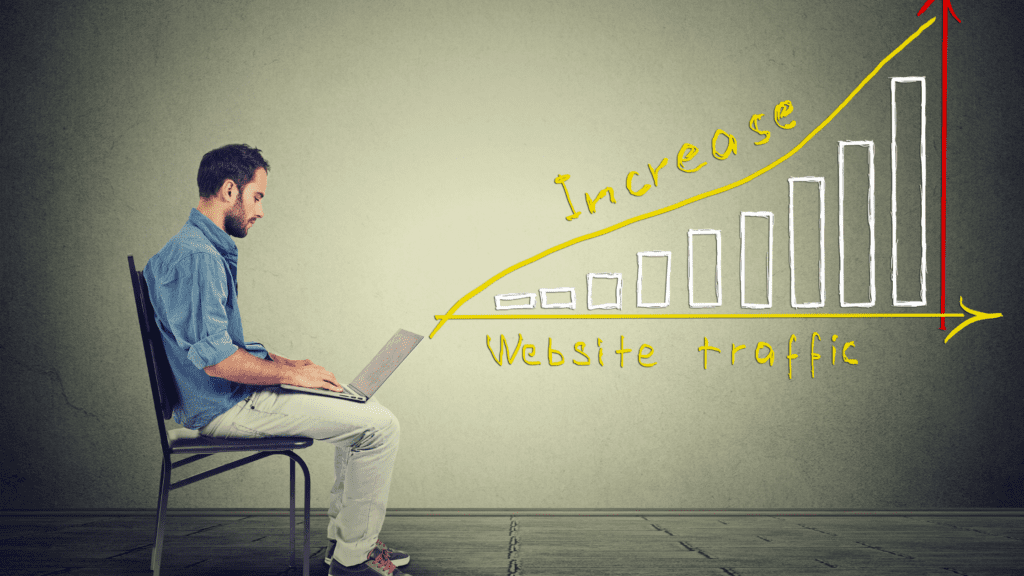You need to adapt your website and customer journey experience to educate, engage and create relationships with your potential customers. It is your single most important sales tool, working around the clock to take care of your buyers.
In B2B marketing, a website used to be a digital advertising board with basic information about a company. It has now become the most important platform for meeting today’s digital buyers. Today, buyers turn to the Internet and search engines to get answers to their questions.
How To Improve Customer Journey On Website
The possibilities of web design and development are constantly changing. But there are certain areas that you can focus on to transform your website.
You can go from just existing on the web to actively attracting and driving your potential customers – a perfect inbound marketing platform.
If you are not familiar with Inbound marketing, I recommend reading this article: 5 Reasons Why Your Inbound Marketing Strategies Don’t Work.
1. Website Design And Messaging
In general, the content on the website should be created with your buyers in mind.
Many people make the mistake of creating content based on what the company wants to say, such as their history, USPs, etc. But that type of content is secondary when tailoring your website to the buyers. It should be included but shouldn’t be the most prominent content (on the home page, main headings, etc.).
Your potential customers do not visit your website because they want to read about your company. They want to know if you can help them solve problems or challenges. And that’s exactly what you need to include in your content.
So, you need to create a platform where your buyers can quickly identify that you understand their problems and challenges. You need to show that you have the insights and knowledge to help them with their situation.
Get Visitors To The Website

Inbound marketing is about attracting your buyers so that they try to get in touch with you instead of you having to reach out to them.
An important part of this process is getting them to your website. It is a comprehensive topic to cover, where you need to ensure that you show up in the search results for what your potential customers are searching for.
But it is worth mentioning in this article that your website should be optimized with content that will help you drive organic traffic from the search engines. It involves some technical aspects but also publishing quality content, which I’ll focus on here.
One thing that is effective in generating interest and attracting visitors to your website is to create a blog where you publish articles about topics that your buyers are interested in reading about.
You can then share the articles on social media platforms, and create email campaigns or newsletters to gain visibility and drive visitors to the website.
Take Your Visitors Further On The Website
For most companies regardless of the industry, the goal of the website is to:
- take visitors to the next step
- interact further with the website
- find the required information
- get closer to a purchasing decision
It is also important to gain insights about your visitors. The time spent on the homepage does not say much. But the more they move through the different parts of the website, the more you get to know your visitors and what they are looking for.
To be successful, you need a flow that helps visitors to consume content in a clear and sequential manner.
“What is the main goal or need that someone would have if they came to your site now?”
By answering that question, you will have some important insights into the content of the website. Some of them are more important than others and should be included in high-priority areas (such as the homepage, main headings, etc.).
Focusing on the buyers will lead to them spending more time on the site, which in turn generates more leads and sales in the long run.
2. Interactive Tools For The Right Decision
Considering the digital age and the development in technology, buyers expect to get answers to their questions as easily as possible without having to talk to another person.
To meet this expectation, it would be wise to consider using an interactive tool. It gives your visitors the opportunity to answer the same set of questions that the sales team would ask. It will guide them through the process and help them to take the right decision.
The most common types of tools are:
- calculators for estimating the costs
- configurators for design and construction
- Onboarding of customers
These tools have a great impact on lead generation and sales. They make sales processes more efficient by helping the buyer take a step closer to their decision.
Find out which tool will be helpful for your buyers to make their purchasing decision. Then explore the various options to implement it. You could be integrating one of the existing solutions or developing one of your own tools.
3. Educate Your Buyers
What type of content needs to be used to educate your buyers so that they move closer to a buying decision?
There are a number of aspects to consider, which you can read about here: 5 Tips For Strategic Content Marketing To Help You With Your Campaigns.
You can also gather the sales, marketing, and customer service teams for a brainstorming session. It will be an opportunity for everyone to discuss the questions that they encounter from the buyers.
Does the website address these questions effectively? If not, think about how you can manage it.
4. Premium Content

In addition to articles and content that you share with your network, you should also spend some time creating premium content. This could be more comprehensive videos about how your products or services work, detailed brochures, or guides.
The purpose is to provide your buyers with all the information and guidance that they need to make a purchasing decision. By packaging it in a clear manner, you help them get to know your products or services as efficiently as possible.
5. Visual Content
These days, most people consume visual and multimedia content. If your site primarily uses text, you should take a step back and review the content. Consider different formats for those who consume content in other ways.
6. Social Proof
People like to follow others, especially those whom they trust. It is the same when it comes to making a buying decision.
We often look for proof of others who have bought the product or service and can attest to its ability to solve the problem. Therefore, it is important that you highlight this on the website in the form of:
- customer case studies
- references
- customer quotes
- ratings
- testimonials
7. Website Speed
Buyers want to get answers to their questions and solutions to their problems. They want it in their preferred format, and they also want to get it fast. Therefore, the speed of the website is important. Your visitors have little patience and do not want to wait for the content to be delivered.
Research shows that 38% of buyers will leave a website if it takes more than three seconds to load. Most corporate websites take 8-12 seconds to load, which poses a major problem.
There are various ways to optimize your website and increase its speed. Start by testing your site’s speed using free tools such as PageSpeed Insights. Then meet with a web developer or a technical SEO consultant to come up with a plan for improvement.
You should ensure that you have a website that quickly presents all the important content you have created for your buyers. This way, you can avoid losing a large portion of your visitors.
8. Mobile Design

According to Gartner, 97% of people use a smartphone during their B2B customer journeys. Additionally, search engines rank websites based on how well they perform on mobile. Therefore, the mobile design for a website has become more important than ever for B2B companies.
Adapting a website for its mobile visitors does not just mean that it should look good on the screen. The design should be able to communicate everything in a manner that is easy to understand through a mobile device.
The user experience (including the speed, choice of words, and call-to-action buttons) should be tailored to help the user move through the funnel framework.
The goal should be to establish contact with the sales team. This includes everything from messages and button sizes to the entire map and touchpoints of how a visitor moves through the website.
9. Personalization Of Customer Journey Experience
As you know, people are different and have their unique set of challenges. They may also be in different stages of their buying journey. Therefore, you need to customize your content to communicate effectively with each of them.
By linking your CRM to your website, you can create personalized experiences that are tailored to each visitor. For example, an existing customer may need to contact a key account manager, while a potential customer might need the help of another type of representative.
It can also be based on:
- the type of content you should choose to highlight
- the number of times a person visits your website
- what the user has experienced on the website before
What kind of personalization do B2B buyers value? The one that helps the buyer. If you want to learn more about personalization, you can check out Gartner’s guide here.
